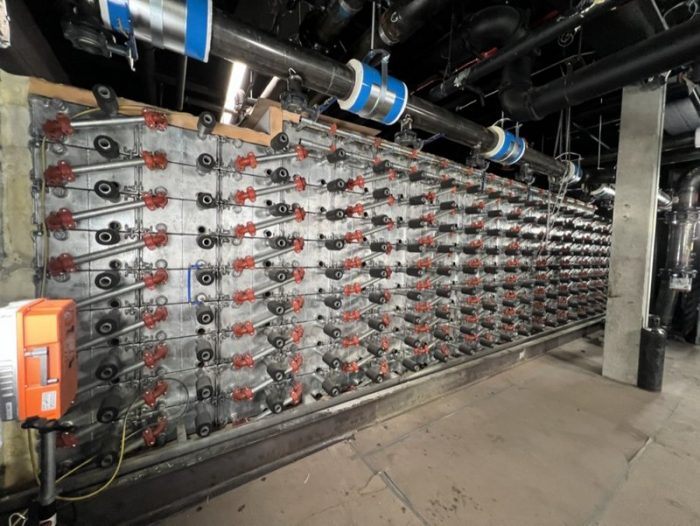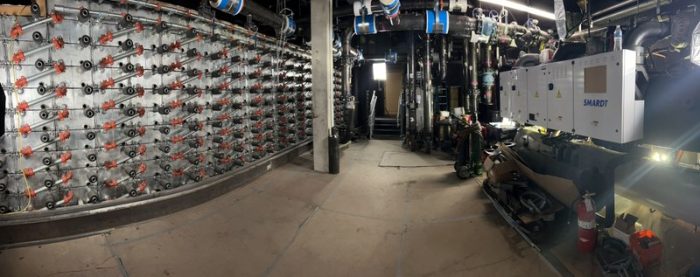
During peak hours, air conditioning in commercial and industrial buildings accounts for approximately half of California’s energy demands. Fortunately, these buildings have the potential to reduce their demand from the electric grid during peak times by installing energy storage solutions.
Two iconic California hotels, The Beverly Hilton and the Waldorf Astoria Beverly Hills, added a novel thermal energy storage system from Nostromo Energy called the IceBrick. The system will charge using power from the grid at times when renewable energy levels are high, to freeze water into ice, then use the ice in the late afternoon and evening, when power demand reaches its highest levels, to provide energy for cooling instead of using fossil-based energy from the grid in the late afternoon.
The 1.4 MWh energy storage system installed inside The Beverly Hilton also serves the adjacent Waldorf Astoria Beverly Hills. It will supply energy for cooling at less than 50% of its current cost and reduce CO2 emissions by 150-200 metric tons annually, or more than 5,000 metric tons for the life of the system.
“We are proud to partner with Nostromo to bring cutting-edge green technology to The Beverly Hilton,” said David Ecija, General Manager of The Beverly Hilton. “This partnership is an extension of our history as forward-thinking property, focused on the future and what is good for our community.”
This is first hospitality industry application of Nostromo’s technology.

“We are thrilled that ownership of leading brand hotels such as The Beverly Hilton and Waldorf Astoria Beverly Hills are adopting Nostromo’s energy storage technology, demonstrating how buildings can play significant role in integrating renewables and improving resilience of the grid in California and nationwide, while cutting their energy costs,” said Yoram Ashery, CEO of Nostromo. “We look forward to partnering with more like-minded ownership and management of commercial buildings, in the hospitality realm and other sectors.”
— Solar Builder magazine

Leave a Reply
You must be logged in to post a comment.